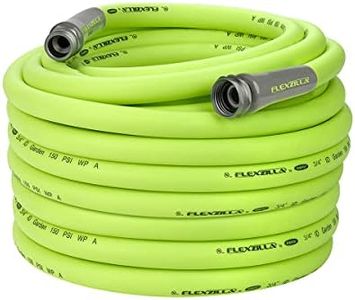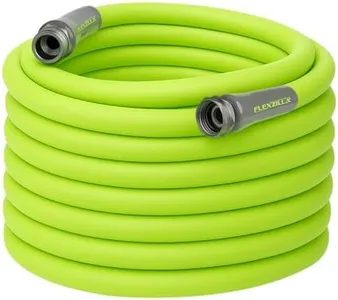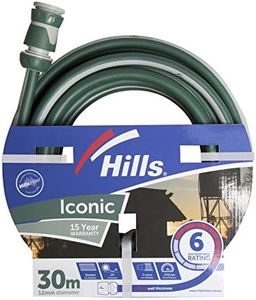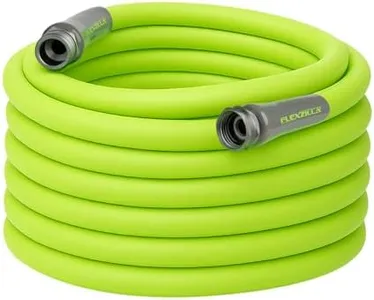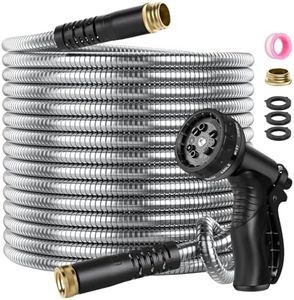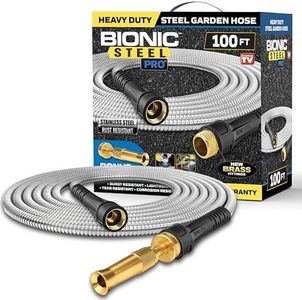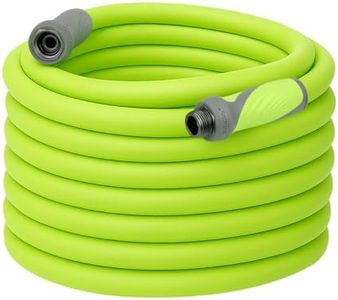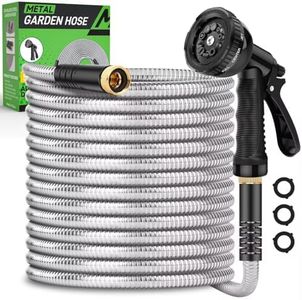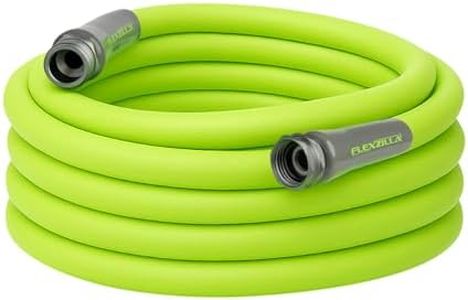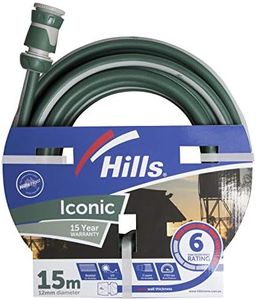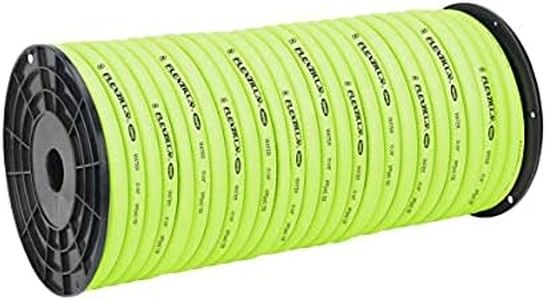We Use CookiesWe use cookies to enhance the security, performance,
functionality and for analytical and promotional activities. By continuing to browse this site you
are agreeing to our privacy policy
10 Best Lightweight Garden Hoses
From leading brands and best sellers available on the web.Buying Guide for the Best Lightweight Garden Hoses
When choosing a lightweight garden hose, it's important to focus on balancing ease of use with durability and functionality. Lightweight hoses are designed to be easier to carry, maneuver, and store, making them perfect for smaller gardens, patios, or for people who prefer not to lug around a heavy traditional hose. Understanding which features matter most will help you pick the right one for your gardening style and routine.Hose LengthHose length refers to how long the garden hose is when fully extended. This is crucial because it determines how far your hose can reach from the water source. Hoses typically come in lengths such as 25, 50, 75, or 100 feet. Shorter hoses (around 25 feet) are easier to manage and store, making them great for small patios or balconies. Medium-length hoses (50-75 feet) work best for moderate-sized yards, offering a good balance between reach and manageability. The longest hoses (100 feet or more) help cover large gardens but can be heavier and harder to handle, even when labeled 'lightweight.' To pick the right length, measure the farthest point in your garden you need to reach and choose a hose that's just a bit longer to avoid stretching.
Hose MaterialThe material of a hose determines how light and durable it is. Common materials for lightweight hoses include vinyl, rubber blends, and newer expandable fabrics. Vinyl hoses are very light and easy to move but can kink easily and may not last as long. Rubber or hybrid hoses are a bit heavier but much more robust, standing up to more wear and tear. Expandable hoses (often made with a fabric outer layer and latex inner tube) are extremely light and grow when filled with water, but sometimes wear out quicker. To choose the best material, consider how often you'll use the hose and if it needs to withstand rough surfaces or lots of sun. For frequent, heavy use, a lighter rubber or hybrid is best; for occasional, gentle use, vinyl or expandable hoses are convenient.
DiameterThe diameter of a hose affects water flow. The most common garden hose diameters are 1/2 inch, 5/8 inch, and 3/4 inch. A 1/2-inch hose is the lightest and easiest to carry, producing a lower water flow, which is suitable for watering small plants or using with gentle sprinklers. A 5/8-inch hose provides a middle ground, delivering more water without being too heavy, fitting most home gardening needs. A 3/4-inch hose gives maximum water flow but may be heavier. Your choice should depend on your watering routine: for small hand-watering jobs, a thinner hose is fine, while larger lawns or high-flow sprinklers may need a wider hose.
Kink ResistanceKink resistance refers to a hose's ability to avoid twisting or folding in a way that blocks water. Lightweight hoses are often more prone to kinking, but some materials or designs include features that minimize this problem. Look for hoses advertised as 'kink-resistant' or reinforced with special layers. If you dislike stopping to untangle your hose, aim for a type with higher kink resistance. This is especially useful if you often move the hose around corners or obstacles.
Fittings/ConnectionsFittings are the end parts of the hose that connect to your tap and sprinklers. Fittings are commonly made from plastic or metal, such as brass or aluminum. Metal fittings are more durable and less likely to crack, while plastic fittings are lighter but may not last as long. Look for fittings that are labeled as leak-proof or have crush-proof collars if you want something that will survive drops or heavy use. If you connect and disconnect your hose frequently, sturdier metal fittings are a wise choice.
WeightThe weight of the hose matters most if ease of handling and storage is your top priority. A lighter hose is easier to move around and less of a strain on your arms and back. Even among hoses labeled as 'lightweight,' the actual weight can vary depending on length and material. If you or someone in your household has trouble with lifting or mobility, check the weight listed by the manufacturer and choose the lightest option that still meets your length and durability needs.
Storage and FlexibilityA hose's flexibility affects how easily you can coil it for storage or move it around plants and corners. More flexible hoses are easier to work with, but if they're too soft, they might kink more often. Extendable and collapsible hoses can shrink to a compact size, making them easy to store in small spaces. If storage space is tight or you dislike wrestling with stiff hoses, look for models advertised as highly flexible or self-coiling.

